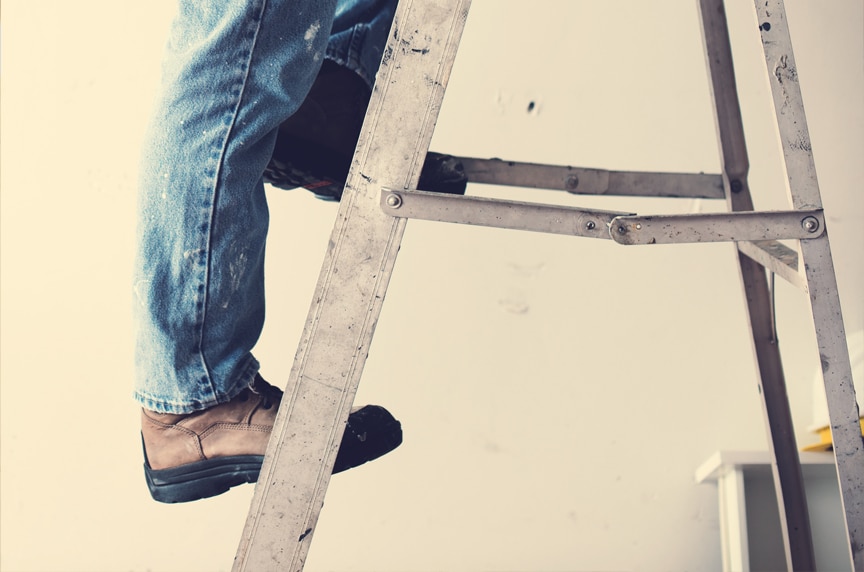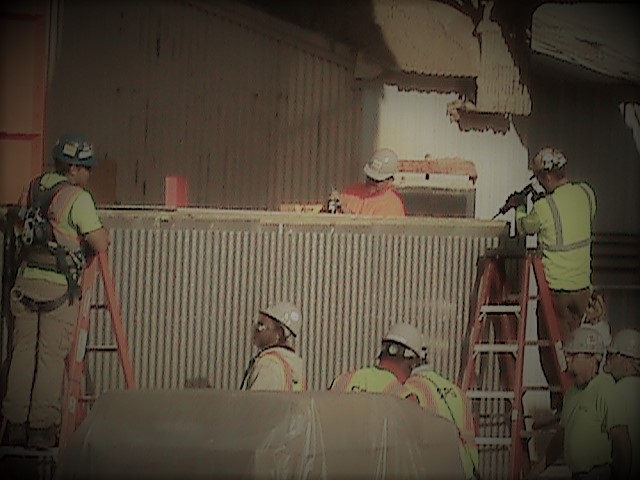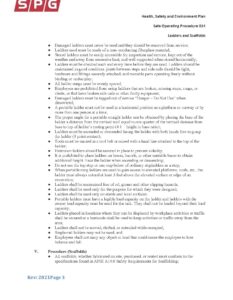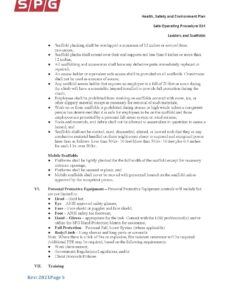
SPG Safety Topic- Ladders

According to the World Health Organization, the United States leads the world in ladder deaths. Each year, there are more than 164,000 emergency room-treated injuries and 300 deaths in the U.S. that are caused by falls from ladders. Most ladder deaths are from falls of 10 feet or less. Falls from ladders are the leading cause of deaths on construction sites. Over the past decade, the number of people who have died from falls from ladders has tripled. Falls from ladders are the leading cause of ladder-related injuries, followed by using a ladder improperly, using a faulty or defective ladder, and simple carelessness.
SPG has put procedures in place to deter such accidents on our jobsites. In SOP 14 – Ladders and Scaffolds it states:
- Ladders must be in good condition, made of suitable fiberglass material, of the proper length, and of the correct type for the intended use;
- All SPG ladders must meet OSHA and ANSI specifications;
- Damaged ladders must never be used and they should be removed from service;
- Ladders used must be made of a non- conducting fiberglass material;
- Stored ladders must be easily accessible for inspection and service, kept out of the weather and away from excessive heat, and well supported when stored horizontally;
- Ladders must be checked each and every time before they are used. Ladders should be maintained in good condition: joints between steps and side rails should be tight; hardware and fittings securely attached; and movable parts operating freely without binding or undue play;
- All ladder rungs must be evenly spaced;
- Employees are prohibited from using ladders that are broken, missing steps, rungs, or cleats, or that have broken side rails or other faulty equipment;
- Damaged ladders must be tagged out of service “Danger – Do Not Use” when discovered;
- A portable ladder must not be used in a horizontal position as a platform or runway or by more than one person at a time;
- The proper angle for a portable straight ladder can be obtained by placing the base of the ladder a distance from the vertical wall equal to one quarter of the vertical distance from base to top of ladder’s resting point (4:1 = height to base ratio);
- Ladders must be ascended or descended facing the ladder with both hands free to grasp the ladder (3 point contact);
- Tools must be carried in a tool belt or raised with a hand line attached to the top of the ladder;
- Extension ladders should be secured in place to prevent sideslip;
- It is prohibited to place ladders on boxes, barrels, or other unstable bases to obtain additional height. Face the ladder when ascending or descending;
- Do not use the top step or one step below of ordinary stepladders as a step;
- When portable rung ladders are used to gain access to elevated platforms, roofs, etc., the ladder must always extend at least 3 feet above the elevated surface or edge of an excavation;
- Ladders shall be maintained free of oil, grease and other slipping hazards;
- Ladders shall be used only for the purpose for which they were designed;
- Ladders shall be used only on stable and level surfaces;
- Portable ladders must have a legible load capacity on the ladder and ladders with the proper load capacity must be used for the task. They shall not be loaded beyond their load capacity;
- Ladders placed in locations where they can be displaced by workplace activities or traffic shall be secured or a barricade shall be used to keep activities or traffic away from the area;
- Ladders shall not be moved, shifted, or extended while occupied;
- Single-rail ladders may not be used; and
- Employees shall not carry any object or load that could cause the employee to lose balance and fall.
By following these procedures, SPG strives daily to create a safe work environment. Safety Matters!





https://www.osha.gov/laws-regs/regulations/standardnumber/1926/1926.1053
https://www.nachi.org/ladder-safety.htm


0 comments